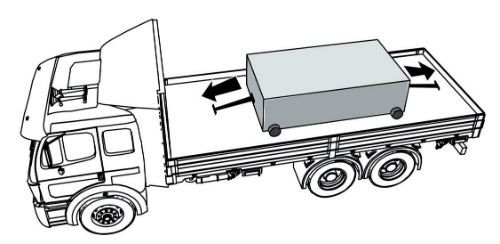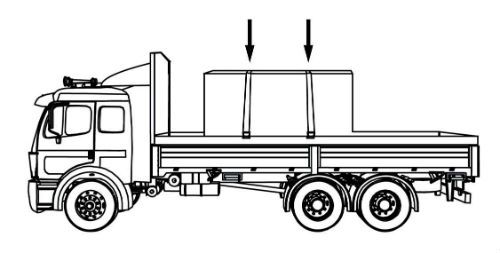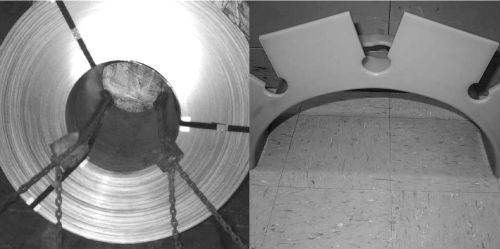Review Questions - Click On The Picture To Begin...

- Slippery articles.
- Over-sized loads.
- Round articles.
- Tall cargo.
Quote From The CDL Manual:
Chock:
A tapered or wedge-shaped piece used to secure round articles against rolling.
- Immobilized by structures of adequate strength to prevent shifting or tipping
- Fully contained by structures of adequate strength.
- Fully covered by a tarp.
- Immobilized on or within a vehicle by appropriate means to prevent shifting or tipping.
Quote From The CDL Manual:
All types of cargo must satisfy one of the following three conditions when being secured:
- Fully contained by structures of adequate strength, or
- immobilized by structures of adequate strength to prevent shifting or tipping, or
- immobilized on or within a vehicle by appropriate means to prevent shifting or tipping.
- A structure, device, or another substantial article placed against an article to prevent it from tipping that may also prevent it from shifting.
- A tapered piece of material, thick at one end and thin at the other, used to help keep cargo from moving.
- Material used to fill a void between articles of cargo and the structure of the vehicle that has sufficient strength to prevent movement of the articles of cargo.
- A device placed between the deck of a vehicle and car or between articles of cargo, intended to provide greater friction than exists naturally between these surfaces.
Quote From The CDL Manual:
Void Filler:
Material used to fill a void between articles of cargo and the structure of the vehicle that has sufficient strength to prevent movement of the articles of cargo.
- Free of knots, knotholes and splits that may affect its strength or interfere with nailing.
- Have grain should run lengthwise along the timber when it is used for structural purposes like blocking and bracing.
- All of these apply.
- Properly seasoned, and free of rot or decay.
Quote From The CDL Manual:
Timber used between tiedowns and cargo must be strong enough not to split or be crushed.
Any timber used should be properly seasoned, and free of rot or decay.
The grain should run lengthwise along the timber when it is used for structural purposes like blocking and bracing.
Timber should be free of knots, knotholes and splits that may affect its strength or interfere with nailing.
- To make pallets.
- To set cargo on top of.
- To fill empty space between cargo.
- To reinforce blocking.
Quote From The CDL Manual:
Cleat:
A short piece of material, usually wood, nailed to the deck to reinforce blocking.
- Part of the structure, fitting, or attachment on a vehicle or cargo to which a tiedown is attached.
- The load carrying area of a truck, trailer, or intermodal container.
- A vertical barrier placed directly behind the cab of a tractor to protect the cab in the event cargo should shift forward.
- A rail along the side of a vehicle that protects the side of the vehicle from impacts.
Quote From The CDL Manual:
Deck:
The load carrying area of a truck, trailer, or intermodal container.
- Backwards.
- Side-to-side.
- Frontwards.
- Downward.
Quote From The CDL Manual:
Indirect Tiedowns

Indirect tiedowns create a downward force that increases the friction between the cargo and the deck. This increased friction restrains the cargo.






 Cargo Securement Terms That Truck Drivers Should Know:
Cargo Securement Terms That Truck Drivers Should Know:



 TT On Facebook
TT On Facebook